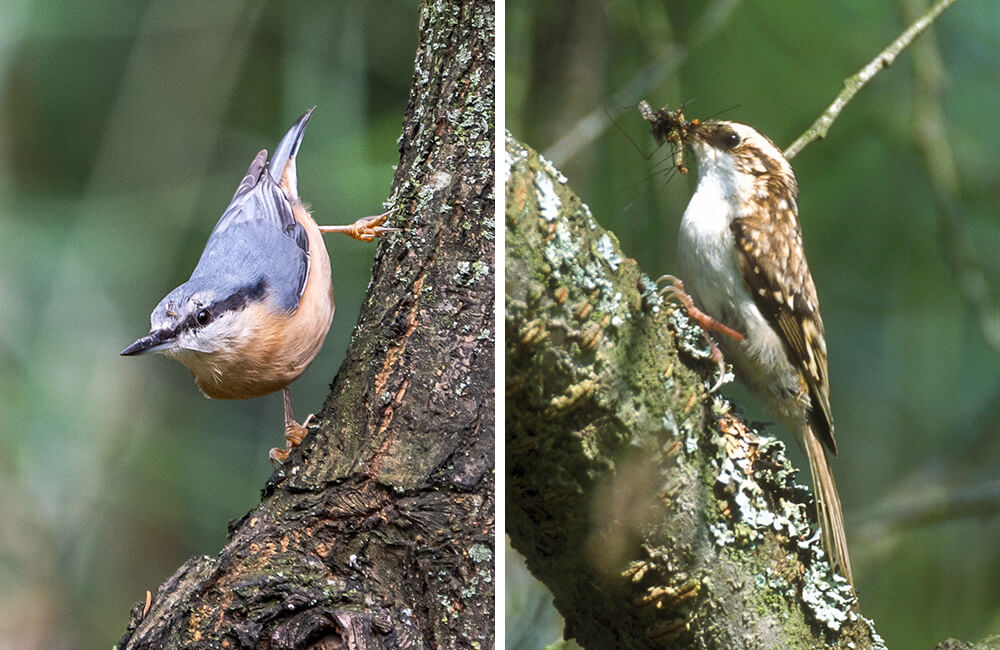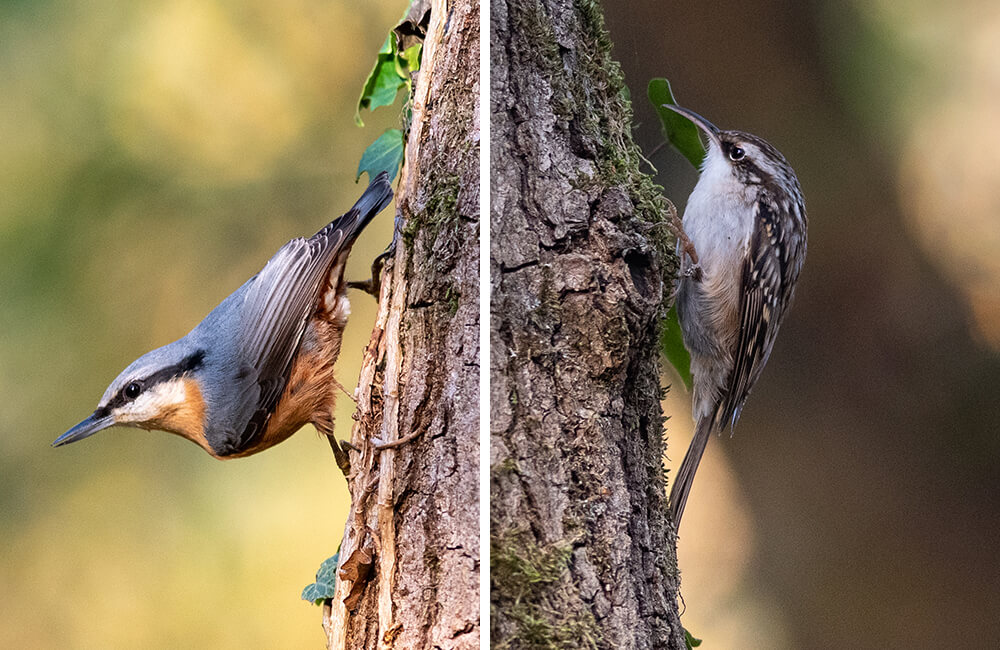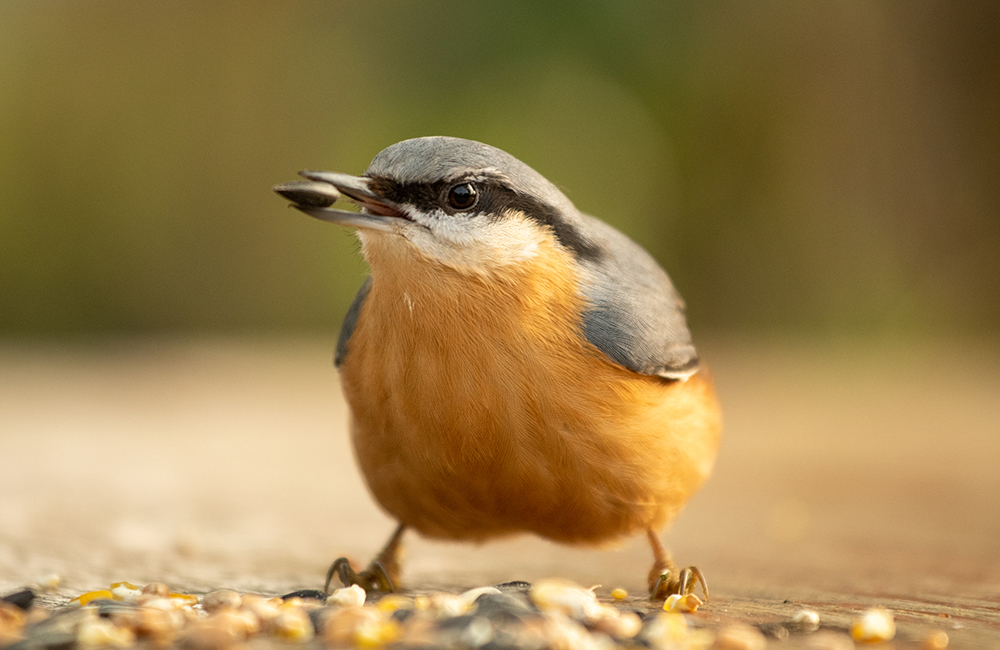If you enjoy birdwatching, you may have noticed two small birds frequently seen on tree trunks: the nuthatch and the treecreeper. At first glance, they might look similar, but their behavior, appearance, and movement patterns set them apart.
Knowing the differences between these two species will help you identify them more easily in your garden or during a walk in the woods.


Appearance: stocky vs. slender
The nuthatch (Sitta europaea) has a compact, stocky body with a relatively large head and a short tail. It has a distinctive blue-grey back, a warm orange underside, and a striking black stripe running across its eyes, giving it a masked appearance. Its strong, pointed beak is perfect for breaking open seeds and nuts.
The treecreeper (Certhia brachydactyla or Certhia familiaris) has a much more slender and delicate appearance. It has a brown, speckled back that blends in perfectly with tree bark, making it an expert at camouflage. Its underside is pale, and its thin, curved beak is designed for extracting insects from crevices in the bark. Unlike the nuthatch, the treecreeper has a long, stiff tail that helps it balance as it moves up tree trunks.
Movement: up or down?
One of the easiest ways to tell these birds apart is by their movement. The treecreeper is a specialist at climbing upwards. It starts at the base of a tree and spirals upward in search of insects hidden in the bark. Once it reaches a high point, it flies down to the bottom of another tree and repeats the process.
The nuthatch, on the other hand, is unique among European birds because it can climb both up and down tree trunks, even head first. This gives it a distinct advantage in finding food, as it can access crevices that other birds might miss. It is also more likely to move sideways along branches, showing a more agile and dynamic movement pattern.


Habitat and nesting
While both species inhabit woodlands and parks, the nuthatch is more adaptable and can also be found in gardens with mature trees. It nests in tree cavities, often taking over old woodpecker holes, and may even plaster mud around the entrance to adjust the size of the opening.
The treecreeper prefers dense forests and wooded areas where old, textured tree bark provides ideal foraging grounds. It builds its nest behind loose bark or in crevices, constructing a small, cup-shaped structure from twigs, moss, and feathers.


Feeding habits: seeds vs. insects
Both birds are expert foragers, but their diets differ slightly. The nuthatch is an opportunistic feeder, consuming insects in the summer and switching to seeds, nuts, and even small pieces of fruit in the colder months. It is known for wedging large seeds or nuts into tree bark and hammering them open with its strong beak.
The treecreeper, in contrast, is almost exclusively an insect-eater. It carefully probes tree bark with its slender beak, searching for spiders, larvae, and other small invertebrates. Because of its specialized diet, it is more often seen in mature forests with plenty of old trees full of crevices.
If you're lucky, you can sometimes spot nuthatches visiting a bird feeder.
Although the nuthatch and treecreeper share a preference for trees, their physical characteristics, movement patterns, and feeding habits make them easy to distinguish once you know what to look for.
The nuthatch is stocky, can climb in all directions, and eats a varied diet, while the treecreeper is slender, always moves upwards, and feeds primarily on insects. By paying attention to these details, you can quickly identify which bird is visiting your garden or the nearby woods.
